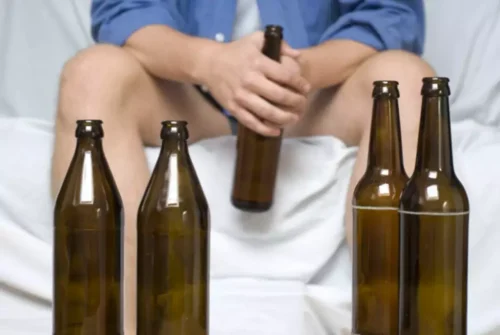Alcohol Use Disorder: Definition, Symptoms, Traits, Causes, Treatment

If you’re concerned about someone who drinks too much, ask a professional experienced in alcohol treatment for advice on how to approach that person. Alcohol use disorder is a pattern of alcohol use that involves problems controlling your drinking, being preoccupied with alcohol or continuing to use alcohol even when it causes problems. This disorder also involves having to drink more to get the same effect or having withdrawal symptoms when you rapidly decrease or stop drinking.
- As with other medical diseases but unlike most bad habits, prospective studies demonstrate that willpower per se is of little predictive significance.
- There are currently three medications approved by the FDA for the treatment of an alcohol use disorder.
- The most severe form of alcohol withdrawal is known as alcohol withdrawal delirium or delirium tremens, often referred to as the DTs.
- An estimated one-third of alcohol abusers report experiencing a mental illness.
Impact on your health

The sheer number of factors that can influence the development of an alcohol addiction make it virtually impossible to accurately predict whether any individual will develop alcoholism. While it is an individual’s personal choice whether or not to begin drinking, a great deal of research suggests that the development of alcoholism once drinking commences is largely out of that individual’s control. It is also true that no single factor, nor group of factors, will determine whether or not someone becomes an alcoholic. Both internal and external factors contribute to the development of alcoholism. Internal factors include genetics, psychological conditions, personality, personal choice, and drinking history.

Dual addictions and dependencies
- In some countries and states, it is significantly harder and more expensive to acquire alcohol than in others.
- Peer pressure, wanting to fit in socially, and a desire to feel more mature than one’s actual age are common motivating factors for a young person to try alcohol.
- Federal public health agencies recommend public water systems be calibrated to less than half the fluoride levels which this research links to lower IQ in children.
- A few empirically validated practices can help identify strong treatment programs.
The NIAA offers a list of a number of these support groups, including secular options. See your doctor if you begin to engage in behaviors that are signs of alcohol use disorder or if you think that you may have a problem with alcohol. You should also consider attending a local AA meeting or participating in a self-help program such as Women for Sobriety. You may need to seek treatment at an inpatient facility if your addiction to alcohol is severe.
- By that measure, the report suggest children in those communities might be at risk.
- These facilities will provide you with 24-hour care as you withdraw from alcohol and recover from your addiction.
- Typically, a diagnosis of alcohol use disorder doesn’t require any other type of diagnostic test.
- Cross-sectional survey data obtained from more than 180,000 young adults indicated that alcohol abstinence increased between 2002 and 2018.
Mental Health

Adolescents are also likely to binge drink, which can lead to serious consequences, including injury and death. Mutual-support groups like Alcoholics Anonymous (AA) and inpatient rehabilitation are common why do people become alcoholics treatments for alcohol problems. As mentioned above, the DSM-5 says an AUD diagnosis requires at least 2 of the 11 symptoms of alcoholism listed above to have occurred within the previous 12 months.
Treatment settings teach patients to cope with the realities of an alcohol-infused world. Just like any other illness, it is ultimately the responsibility of the individual to learn how to manage it. However, loved ones often want to help, such as by showing solidarity or hosting a gathering that feels safe for their loved one. Whenever possible, it’s best to have an open, respectful, and direct conversation with the individual in recovery, and ask how they feel about alcohol being present. Doing this in advance will allow time for both people to process the discussion and set clear expectations. Some people may be hesitant to seek treatment because they don’t want to abstain entirely.
- In addition to getting appropriate AUD treatment, there are things that you can do on your own that will make it easier to cope with and sustain your recovery.
- The brain experiences the effects of alcohol right away, resulting in changes in mood, behavior, and judgment.
- Alcohol consumption was also linked to a greater risk for stroke, coronary disease, heart failure, and fatally high blood pressure.
- Research shows that bad smells, like car fumes or cigarette smoke, can worsen motion sickness, while pleasant smells, like peppermint essential oils, may help reduce nausea.
- Additionally, many psychological disorders reduce an individual’s ability to perceive the reality of their drinking or acknowledge risks and warning signs.
- Before it becomes problematic, why do people turn to alcohol in the first place?
Medical Professionals

Factors affecting alcohol consumption and alcohol-related harm
International Patients
The 10 Most Common Causes of Alcoholism


